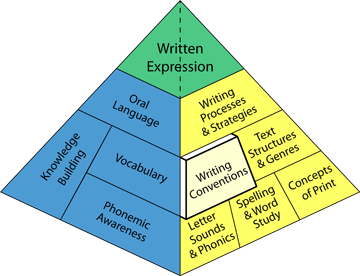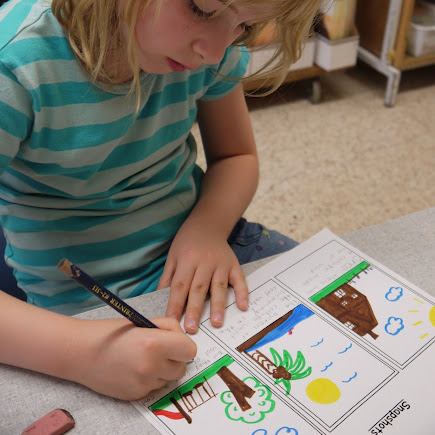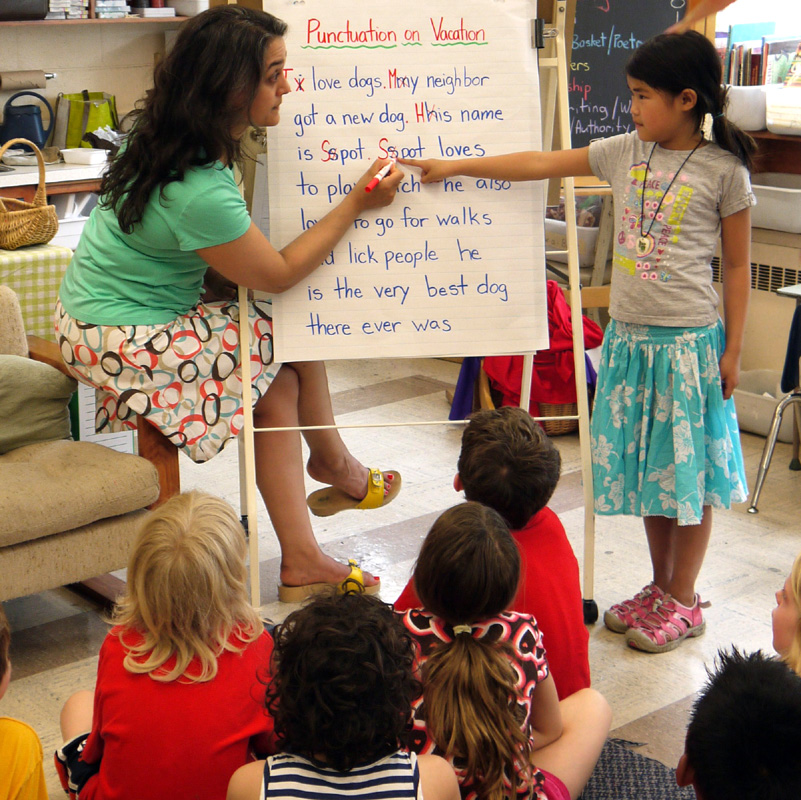Writing Conventions
What the experts say about writing conventions:
If students are to become good writers, we need to help them become strategic, knowledgeable, and motivated writers who are not hampered by inefficient or faulty transcription and sentence construction skills.
~ Steve Graham
When students let the reader know to pause or stop at punctuation, it’s a head nod. When they use accurate spelling, it’s a big smile. A capital letter used correctly is the equivalent of direct eye contact that urges the reader to keep going. When conventions are used incorrectly, or not at all, it baffles the reader.
~ Ruth Culham
Children use writing to share information with others. By watching an adult write, they are introduced to the conventions of writing.
~ Derry Koralek & Ray Collins
Read more about writing conventions!
-
Prevention and Intervention of Writing Difficulties
- Using Sensory Integration Strategies to Improve Handwriting
OVERVIEW of writing conventions
|
|
Writing conventions are the mechanics of writing, like capitals, punctuation, and handwriting. When students can apply these mechanics without effort, they are able to give their attention to the higher order aspects of writing like idea generation and word choice. For students to communicate their ideas effectively in writing, they need to be taught how to use writing conventions effectively. |
TEACHING writing conventions
|
|
Students benefit from explicit instruction in writing conventions, including letter formation and punctuation and capitalization rules. Modeling is one effective tool in which teachers verbalize their thought processes about writing conventions while they write. Statements to use during modeling might include “I know that I need to put a capital letter here because I’m starting a new sentence.” |
ASSESSING writing conventions
|
|
One of the best ways to assess students' knowledge of writing conventions is to look at their writing. By doing so, teachers can observe students' use of punctuation and capitals, and the size, spacing, and legibility of their printing. It is also helpful to watch students write during small group instruction. Observe the way students form letters, since letter formation is as important as neatness, and monitor student progress throughout the school year. |
Featured Videos
Print so it’s Easy to Read: Practicing Letter Formation (Virtual Tour)
No Caps or Punctuation: Comparing Two Pieces of Writing (Virtual Tour)
Fix the Morning Message: Providing Meaningful Practice with Editing and Revising
All Writing Conventions Recipes
 Pointing Fingers!: Using Props to Focus on Individual Words and Inter-Word Spaces (Virtual Tour)
Pointing Fingers!: Using Props to Focus on Individual Words and Inter-Word Spaces (Virtual Tour)
PreK - 1st














